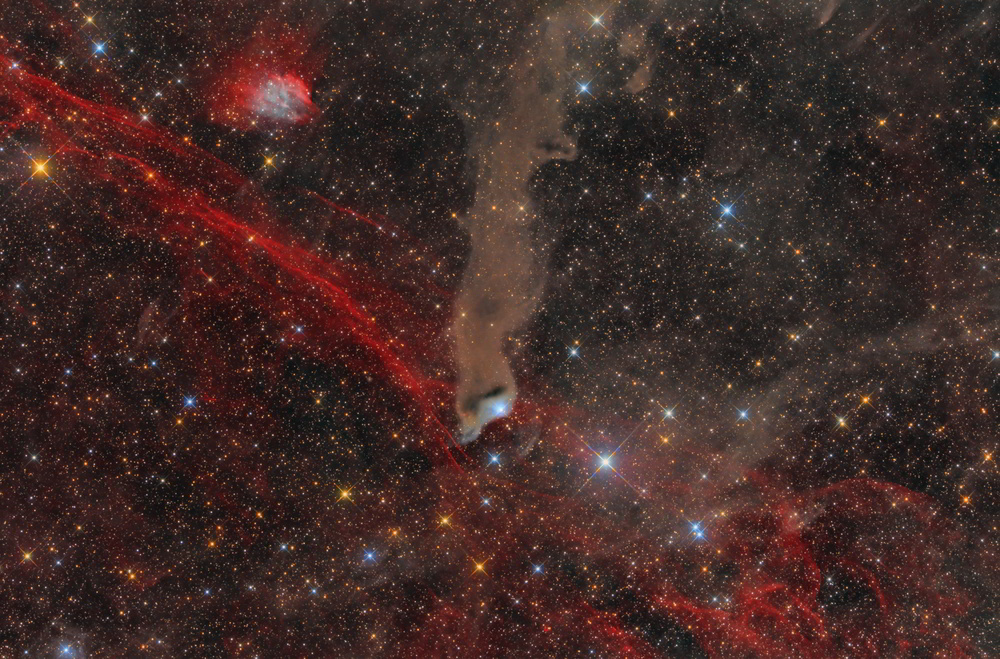SNR G110.3 + 11.3, DeHt 5 and vdB 152

MouseOver for object identification, Click on image for a zoomable version (up to 75%)
|
Location / Date |
Zellerndorf, Aug 2013, Sept 2018, Sept 2020 |
|
Telescope / Mount / Guiding |
ASA 10" Astrograph, ASA 3" Wynne-Corrector (focal length 910mm) |
|
Camera / Exposure |
Canon 6D 73 x 10min
L 45 x 3min bin 2x2, 41 x 3min bin 2x2
|
|
Processing |
PixInsight, Fitswork, Photoshop |
|
Notes |
This image took me more than 7 years to create. The first time I shot with an unmodified Canon 6D in 2013. But was not satisfied with the data after I had the opportunity to process Frank Sackenheim's CCD data of the same object (here or on Frank's homepage). In 2018 I made attempts with luminance shots in 2x2 binning with a Moravian G3-16200 (due to the bigger sensor of the Canon 6D now as 2 panel mosaic), but I have not continued this project. In summer 2020 I found this old data again, added additional Luminance-data and new Halpha- and OIII-data and finally tried to create an image with these old and new data.
Van den Berg (vdB) 152 is a blue reflection nebula that glows at the bottom of a dark Bok globule called Barnard 175. Near the edge of a large molecular cloud, interstellar dust in the region blocks most of the starlight behind it or scatter light from the embedded bright star giving parts of the nebula a characteristic blue color. Ultraviolet light from the star is also thought to cause a dim reddish luminescence in the nebular dust. Embedded in the left side of the nebula is the Herbig Haro object HH 450, a jet emitted from a newly forming star. Dengel-Hartl (DeHt) 5 is a HII- and OIII-region, maybe an ancient planetary nebula, ionized by the white dwarf WD 2218+706 (the blue star in the center of the nebula). Beverly Lynds catalogued the brighter part as LBN 538. |